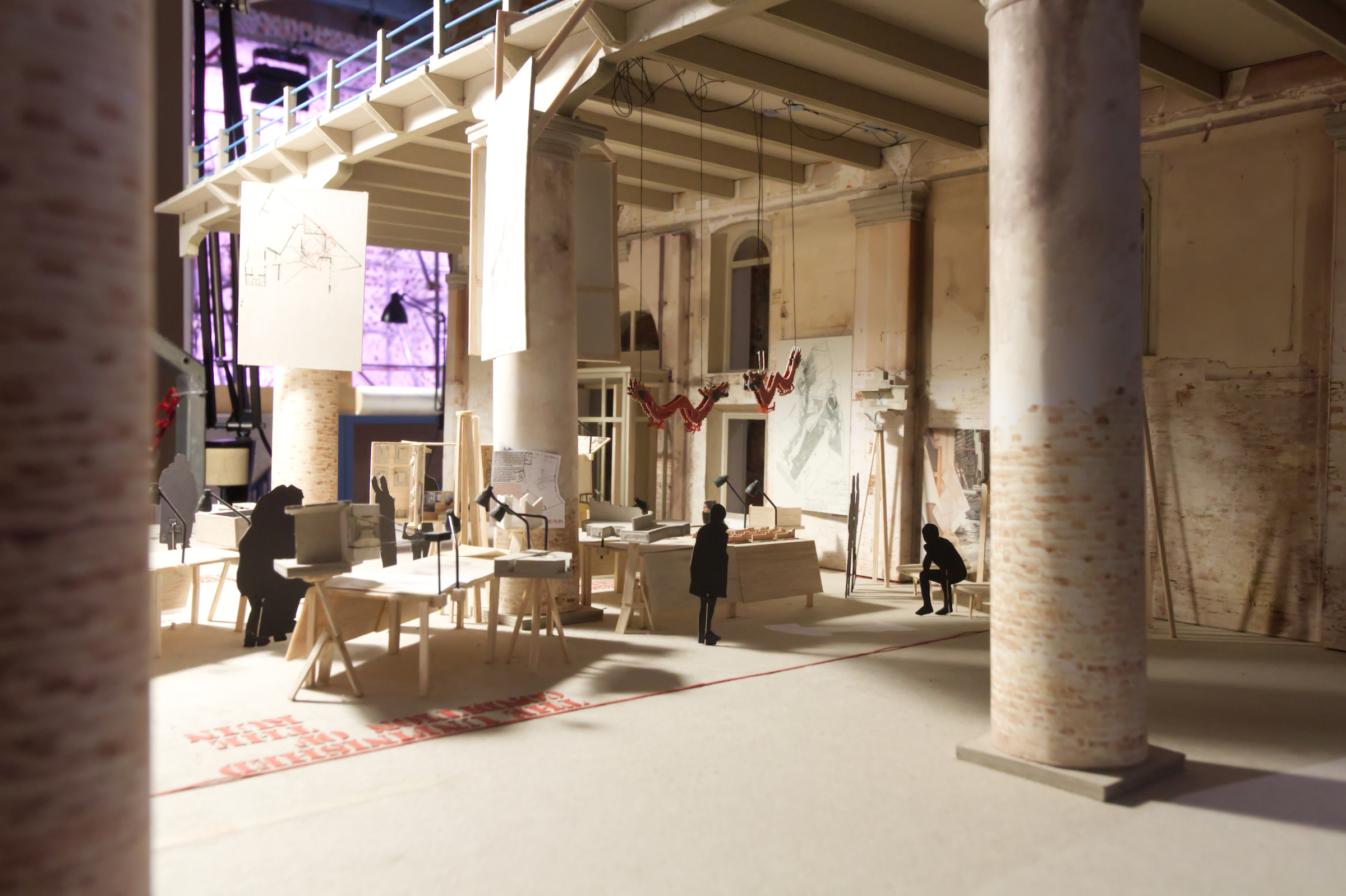All photographs by John Hill/World-Architects
From Barcelona to Venice
John Hill
All photographs by John Hill/World-Architects
Emotional Heritage, as their installation for this year's Biennale is titled, is not the first time Flores & Prats have shipped their output from Barcelona to Venice. In 2018, as part of the FREESPACE Biennale curated by Yvonne Farrell and Shelley McNamara, the couple crafted a full-scale recreation of of the skylight from their Sala Beckett project for Liquid Light, a similarly large installation that also included a treasure-trove of models and drawings tracing the architects' process on the project. While that earlier installation was limited to one project, albeit one that brought Flores & Prats to the attention of more people outside of Barcelona and continues to be their most familiar creation, Emotional Heritage does a similar thing — but on a grander scale. Visitors to the Biennale will see documentation of Sala Beckett but also a handful of other Flores & Prats projects, both completed and in-progress, pieces of their studio that don't relate to projects (a floating dragon!), and even, as the photo at top reveals, a working model of the Biennale exhibition itself.
Below are photos from our tour of the installation during the vernissage in May, accompanied by captions with some additional information and impressions. At bottom is some brief commentary on a new book by Flores & Prats, Drawing without Erasing and Other Essays, released around the time of the Biennale opening and a suitable companion to it.
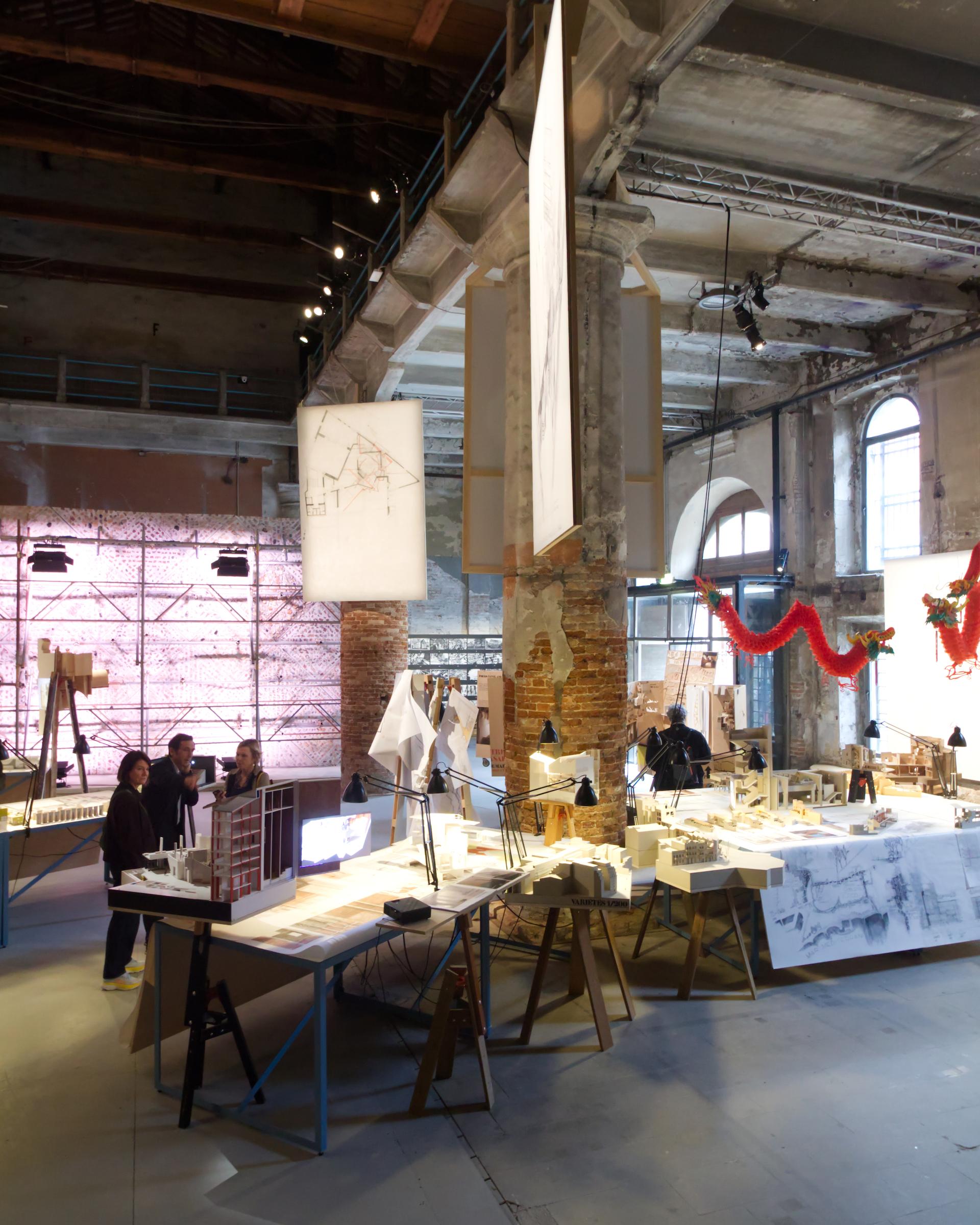
Emotional Heritage fits within the “Dangerous Liaisons” section of the 18th International Architecture Exhibition curated by Lesley Lokko, The Laboratory of the Future, which opened to the public on May 20 and runs until November 26, 2023. This view nearly replicates that of the model of the installation at top.
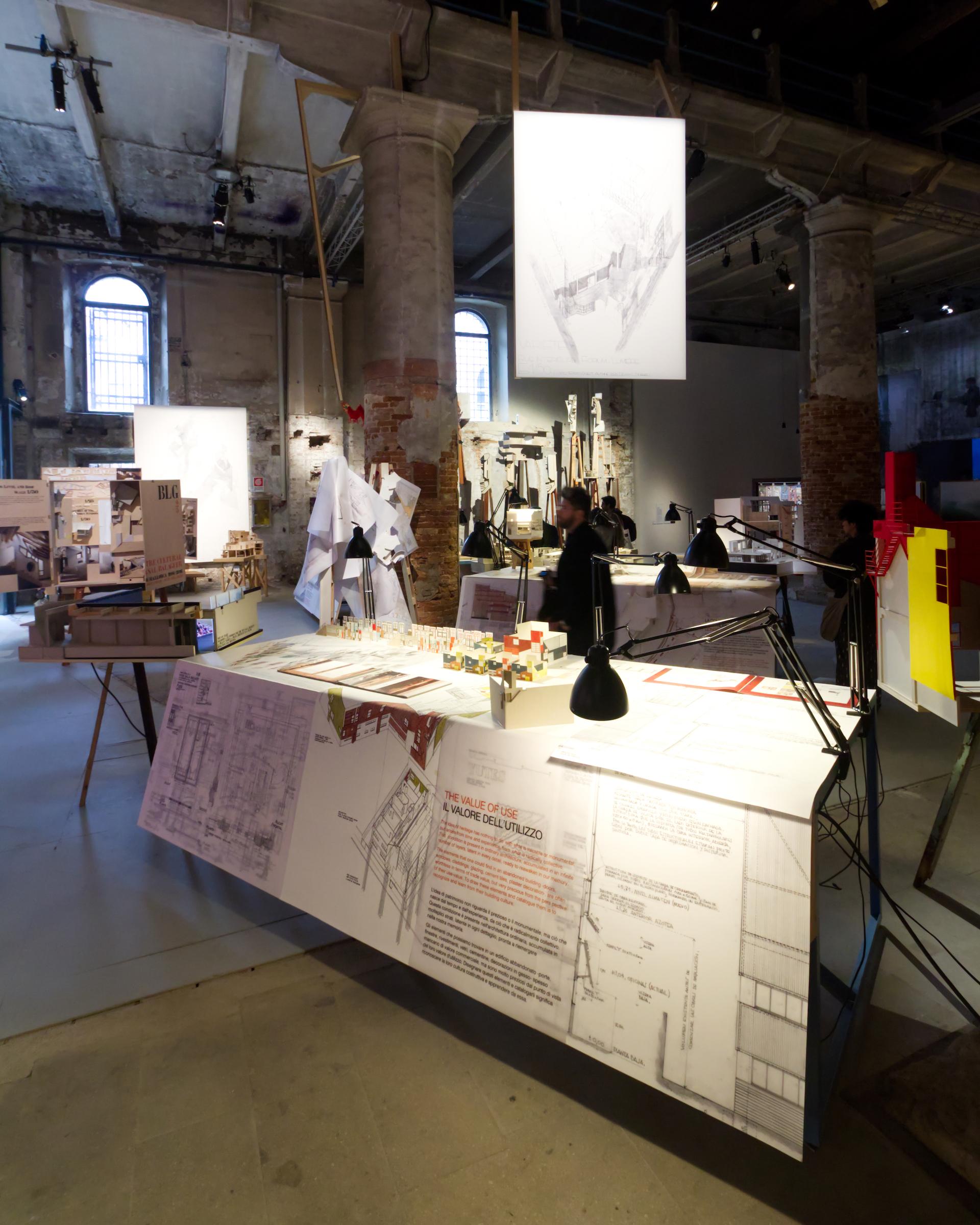
Most visitors will approach from the west as they walk through the Corderie building, first encountering drafting tables with desk lamps illuminating drawings draped across them — “lying on tables to encourage exchange,” in the architects' words.

Models are often integrated into the presentation of drawings, as in this cataloging of doors in the Sala Beckett project; the layering of drawings on trace paper and vellum illustrate Flores & Prats's principal of “drawing with time” …

… “We are interested in drawing with time, without the need to erase or prioritize one era over another, incorporating the temporal dimension of buildings, not from nostalgia but from memory. Drawing the existing to get to know it is, at the same time, an exercise in making it one's own. In that drawing, the different generations that built it are all expressed at once.”
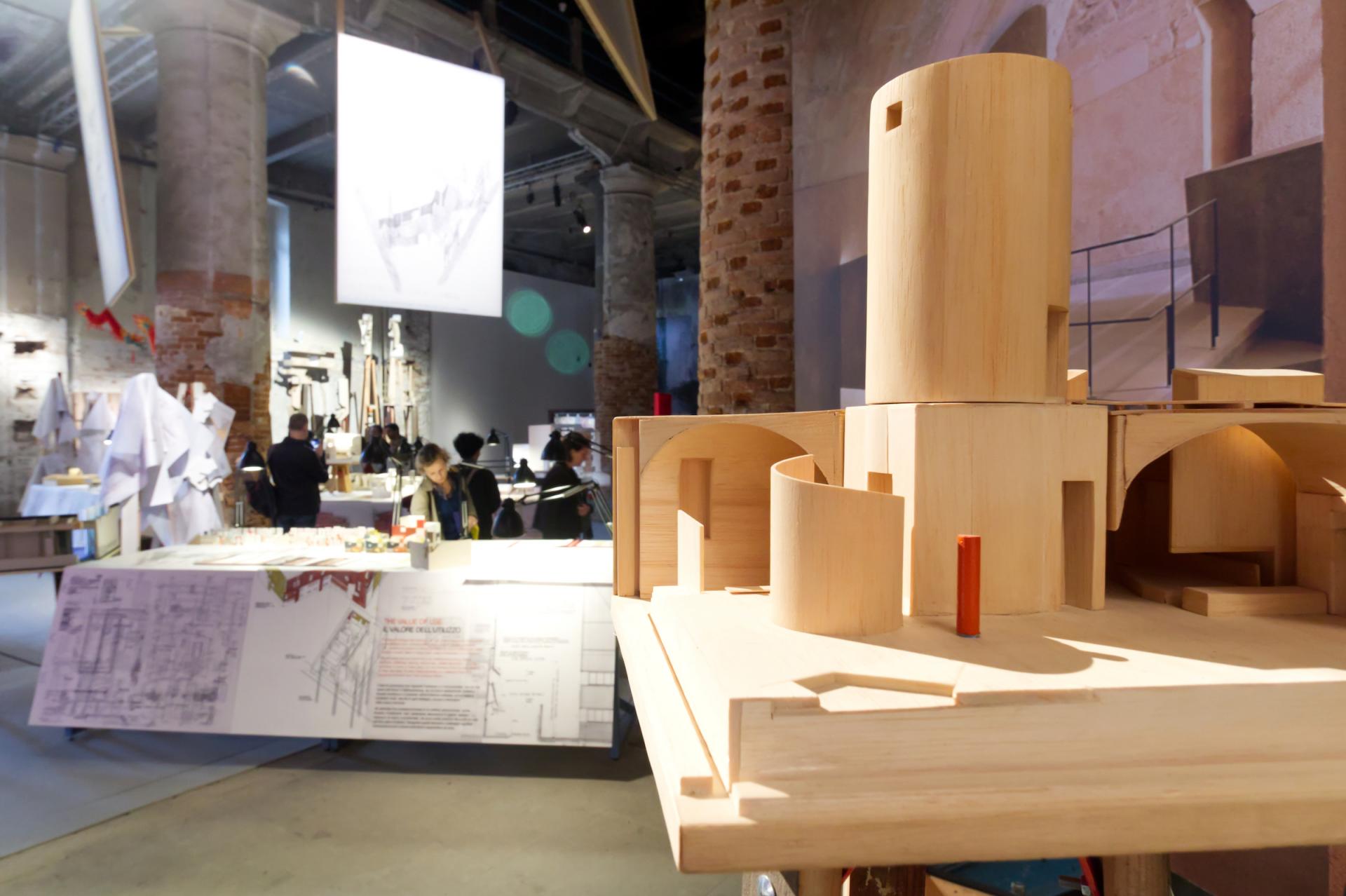
The above drawing and the model in the foreground of this photo document the rehabilitation of a 17th-century flour mill as the Museum of the Mills of the Balearic Islands, completed in 2002 and therefore one of Flores & Prats's first projects.
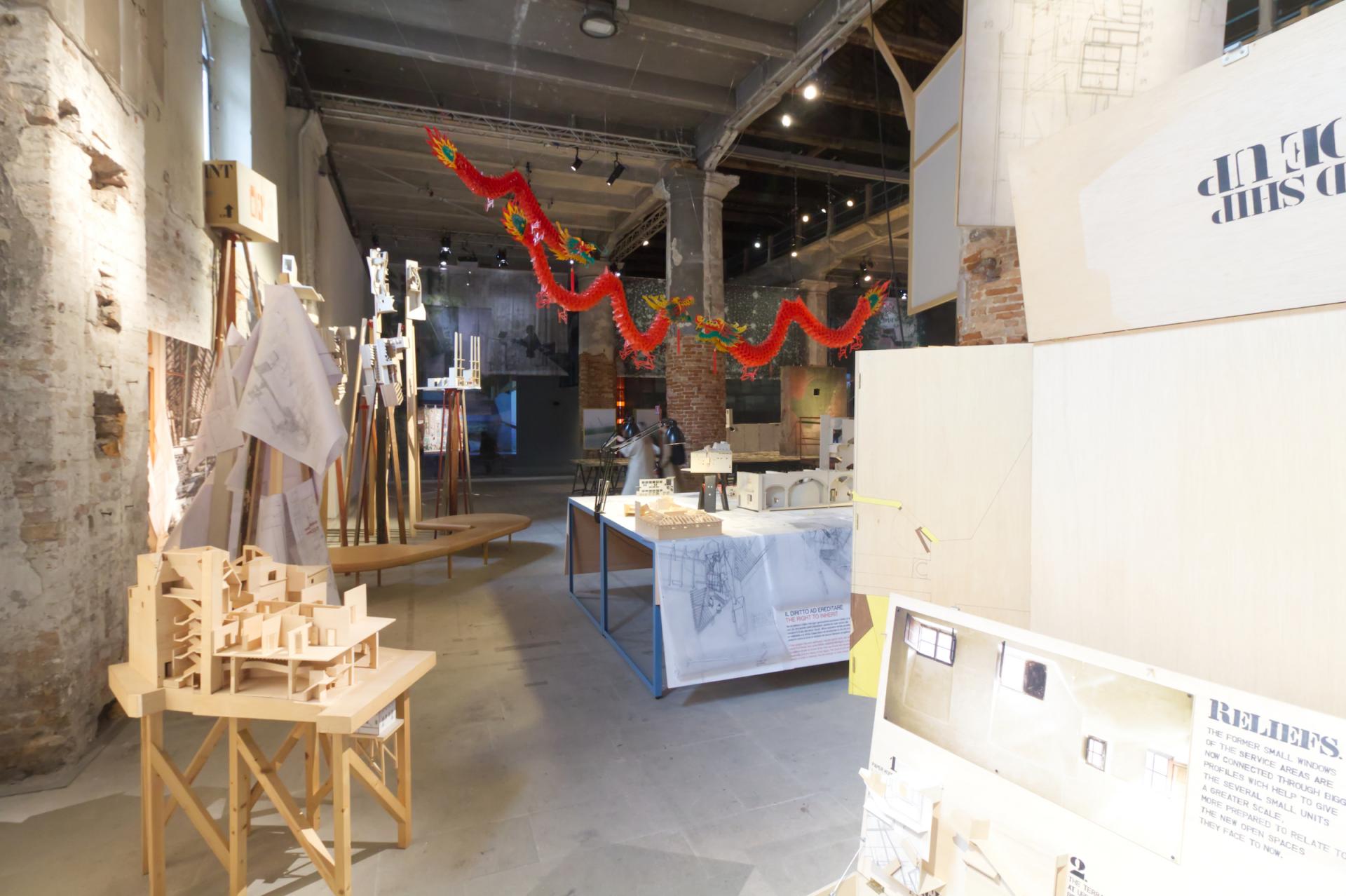
In the distance is the red dragon I spotted above the heads of employees on my visit to Carrer de Trafalgar a year ago, while in the right foreground is the back of one of the sizable, carefully crafted boxes that function as project archives but also repositories of memories.
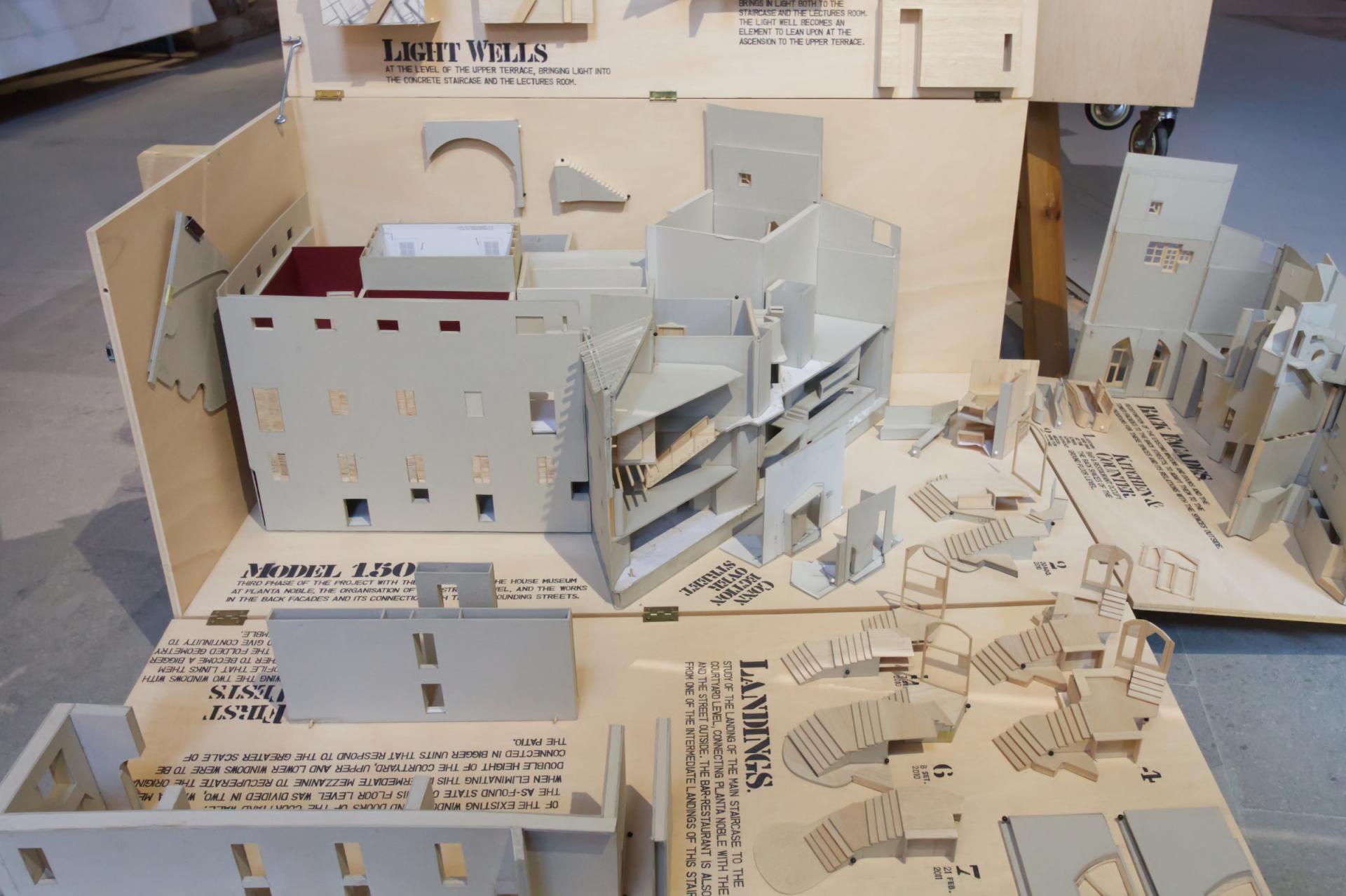
Said boxes open up, like cabinets of curiosities, to reveals models, models, and more models fitting together like three-dimensional jigsaw puzzles and revealing, with the help of stenciled letters, the parts and process of a project, in this case the Casal Balaguer Cultural Centre.
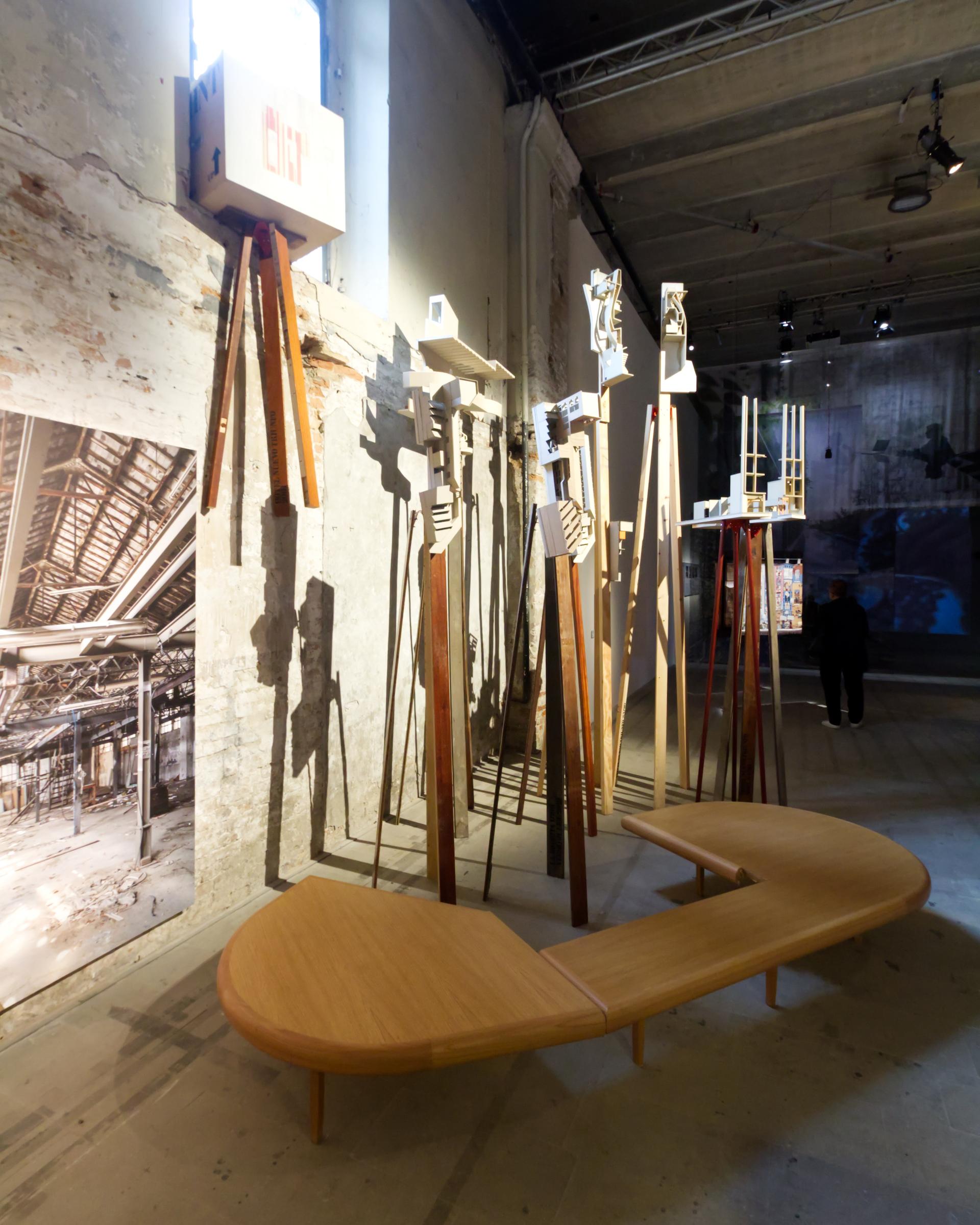
One of the most attention-getting spots in Emotional Heritage is a cluster of models raised on stilts above a wood bench that was used in the 2018 recreation of Sala Beckett.
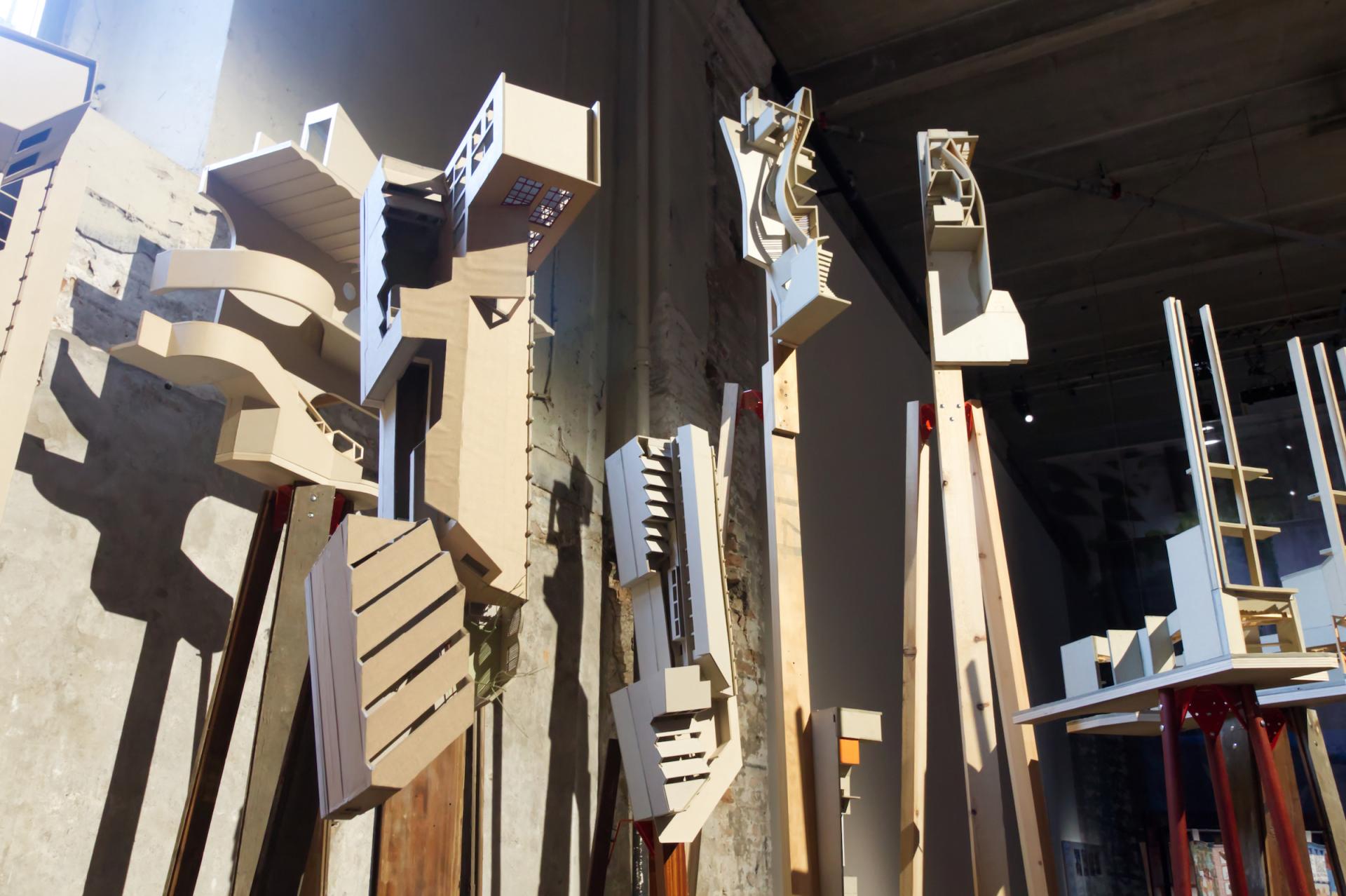
Brightly spotlighted from above, the sectional models pertain to various projects such as La Favorita, the ongoing refurbishment and extension of an industrial complex in Barcelona’s Poblenou district.
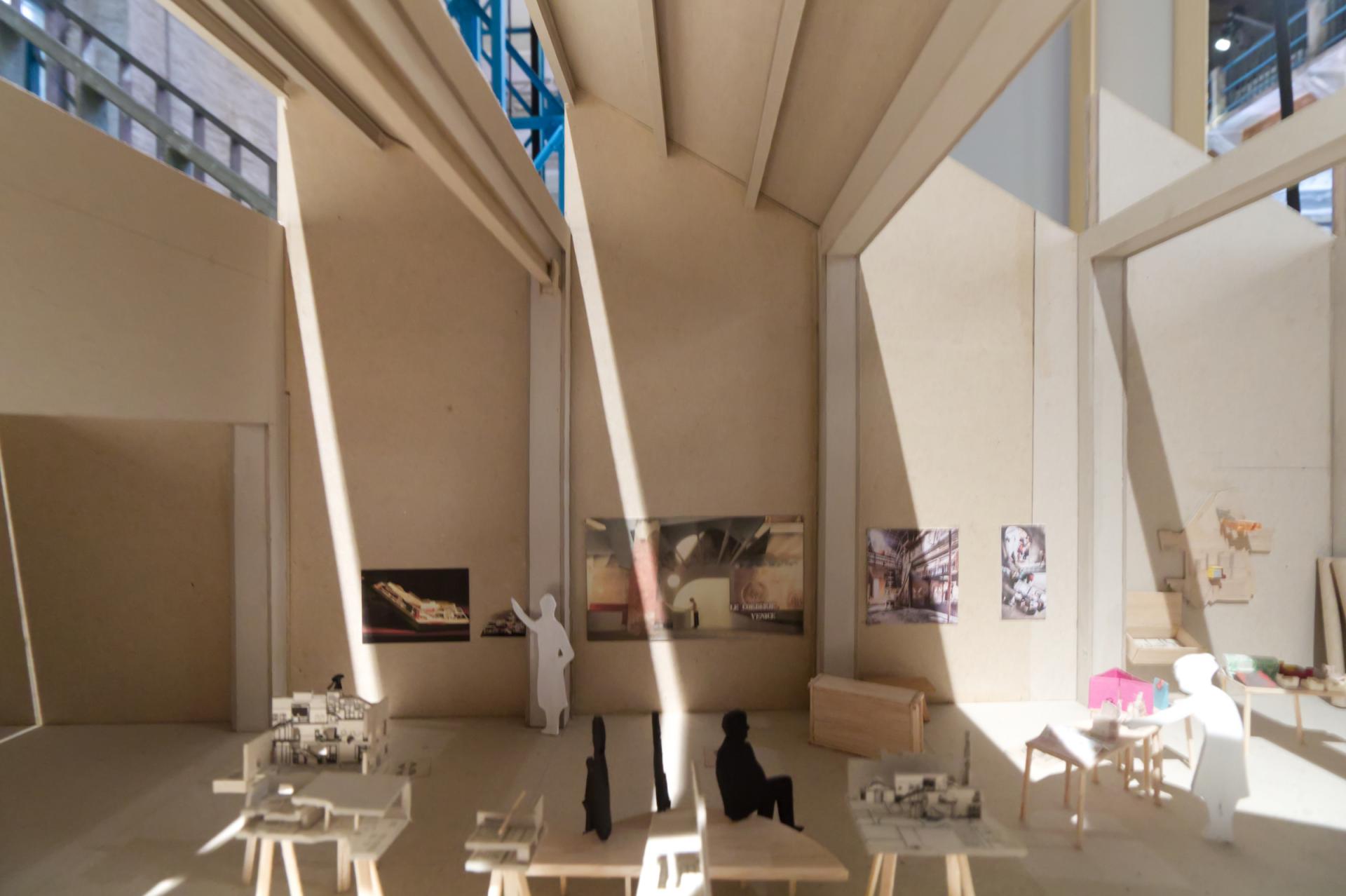
La Favorita was notably the setting for Eva Prats's PhD presentation in 2019, which can be found elsewhere in the installation in this highly detailed, almost dollhouse-like model similar to the Emotional Heritage model at top.
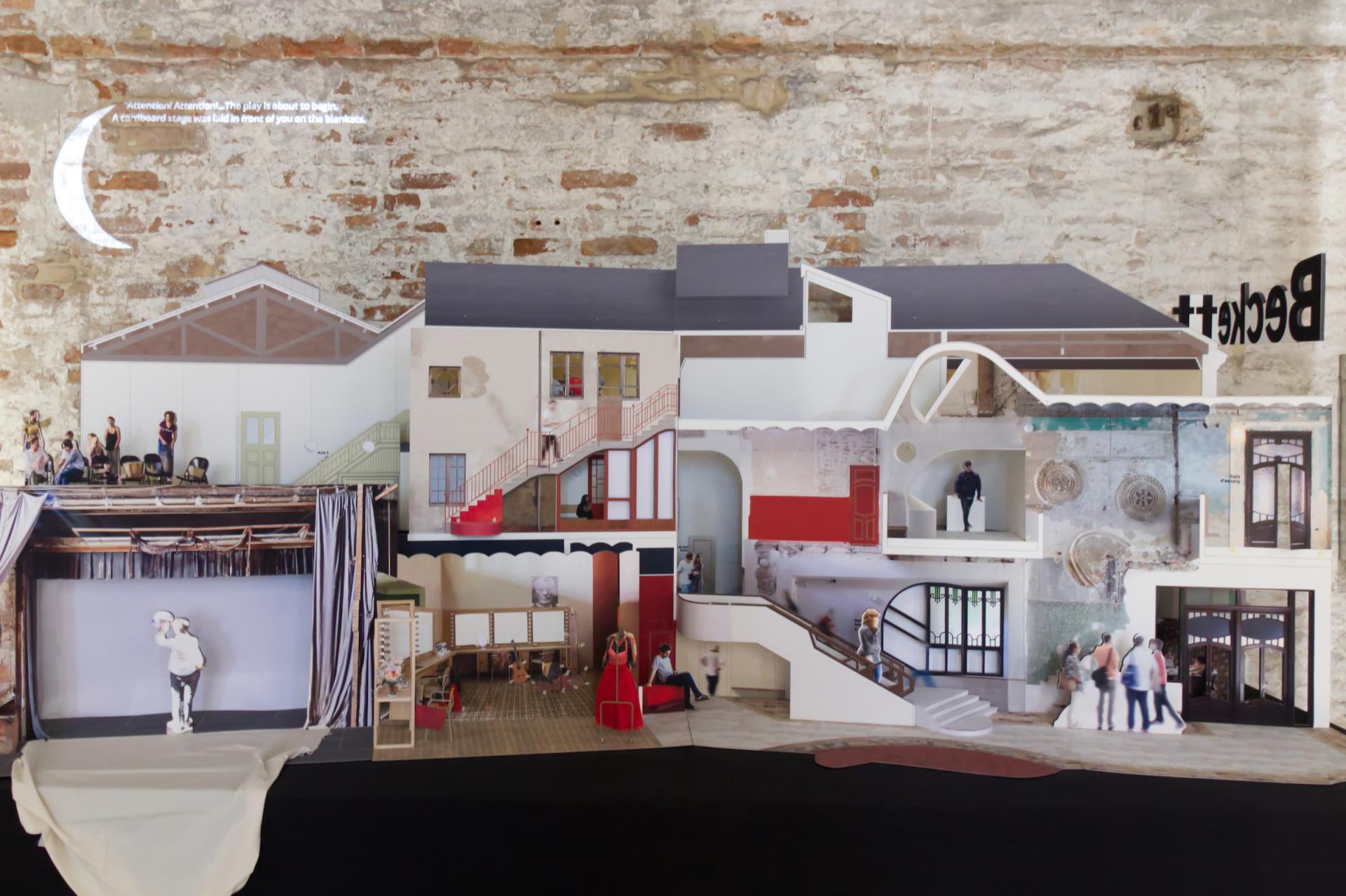
This last view of Emotional Heritage shows a large sectional model of Sala Beckett with plenty of detail of the colors, materials, and spaces of the project. Less overt in the photo is the integration of video, seen subtly in the moon that moves across the brick wall of the Corderie.
Although the models compete with the drawings in the installation — as attested by my photos above, the models win — Flores & Prats are more famous for their drawings, which clearly evoke their mentor and former employer Enric Miralles, are stubbornly hand-drawn, and are a treat for fellow architects to pore over. Drawings are the subject of a new book edited by Moisés Puente, Drawing without Erasing and Other Essays, but, as the title indicates, the primary means of explaining their drawings are words. And although Flores told me when I bumped into him at Emotional Heritage during the Biennale vernissage that he does not think he is a good writer (I disagree), his words and those of Prats benefit from the same honesty as their never-erase drawings. As such, the 17 essays and interviews in the book — four of them were previously unpublished — are a delight to read, and should be especially valuable for practicing architects in need of inspiration. Flores and Prats speak much about their process, from their thinking about the qualities of existing buildings to the way they draw in the studio and with their students; they reveal the books that were formative for them and continue to inspire them; and they delve into architects important to them, including John Hejduk and Ricardo Bofill. In many ways, the book parallels what is revealed in Emotional Heritage, namely how the act of “drawing with time” retains the thoughts, beliefs, concerns, and doubts that unfold over the course of a project — never erased, always there.
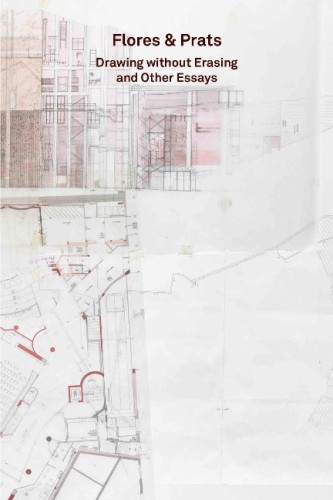
Flores & Prats: Drawing without Erasing and Other Essays
Edited by Moisés Puente
Foreword by Fabrizio Gallanti
14 x 21 cm
165 Pages
50 Illustrations
Paperback
ISBN 9783753303901
Koenig Books
Purchase this book
